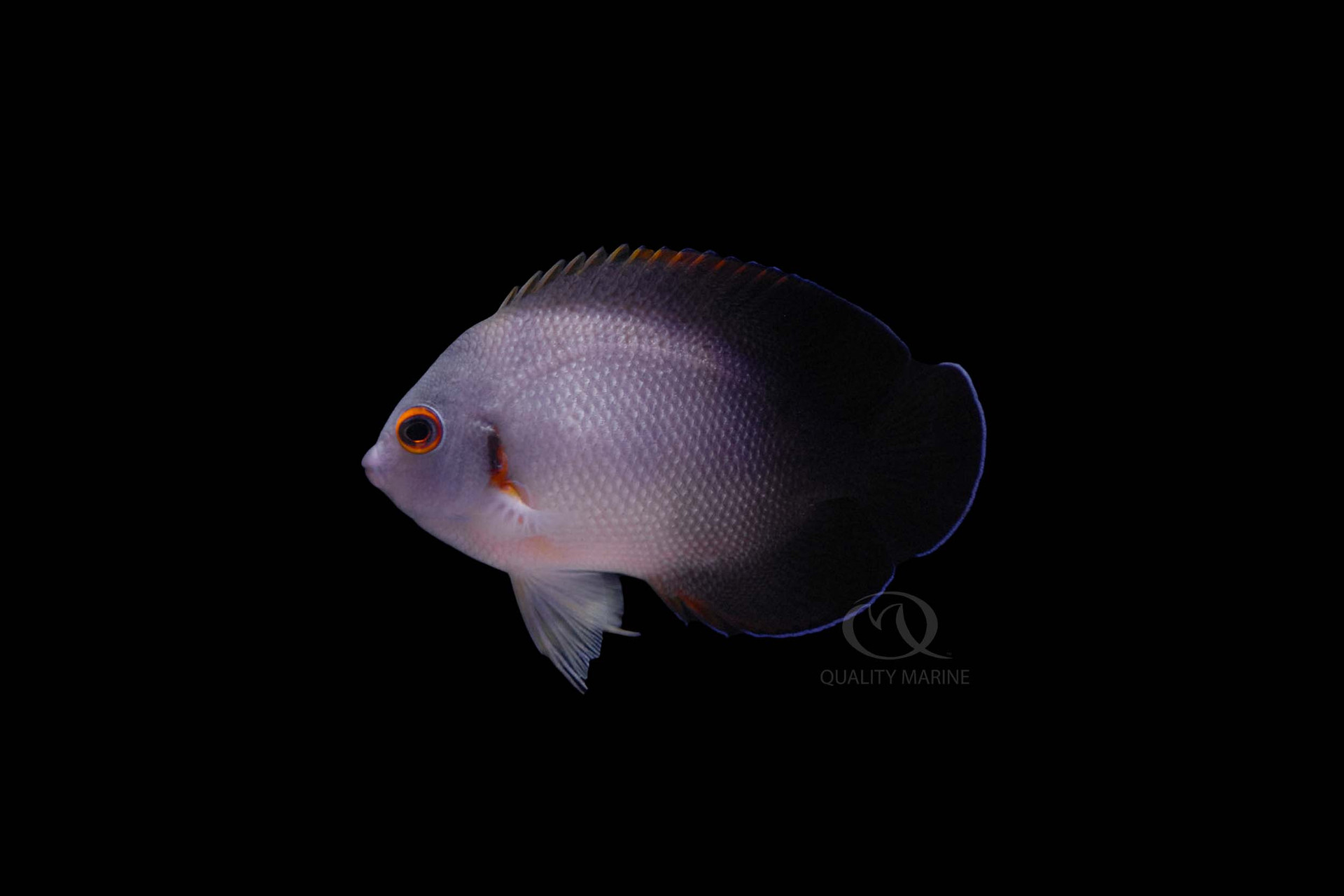Half Black Pearls

In North America, there is a fish we call a Half Black Angel, and most of the rest of the world calls it a Pearl Scale Angel (or some variation of this translated, like in Malaysia, the translation works out as “Pearl Fangs”). They have a wide natural distribution, coming from all over the Indo-Pacific. They are found as far north as Japan and as far south as Lord Howe Island. They are most often associated with reefs in pretty shallow water.
Half Black Angels have been bred in captivity, though accomplishing this is beyond the scope of all but the most advanced, generally professional, aquarists. Males and females are very difficult to identify, and there is an extended pelagic period. As such they are very sporadically available from aquacultured sources. They are generally monogamous, and frequently hybridize with Lemon Peel and Eibli Angels in locations where both species are common. In a related tidbit, the juveniles of Chocolate Tangs sometimes mimic this species.
Half Black or Pearlscale Angels are amazing aquarium fish. Their small adult size makes them adaptable to relatively small aquariums. While we've seen them perfectly healthy and content in displays as small as 40 gallons, we suggest keeping them in an aquarium no smaller than 55 gallons, with 75 and up being better choices, especially if there will be other fish. It has been our experience that the more space they have, the more docile they behave. In general, they are “middle of the road” as far as angelfish aggression goes; they should not be kept with very docile or timid tankmates like Firefish, but could also be picked on by very aggressive fish. We do not suggest keeping Half Black Angles with any other dwarf Angelfish. They are a very hardy fish, being resistant to most common aquarium maladies as long as reasonable water chemistry is maintained. Avoid large fluctuations in water temperature or salinity and avoid nitrogen spikes of any type.
The one real caveat to keeping these (and to be fair, all Centropyge genus fish) is that there is the possibility that they will nibble coral polyps. While these fish are often listed as a “good possibility” for use in coral heavy displays, we have seen dwarf angels (of pretty much every variety) be model citizens in a wide variety of reef aquariums, and then one day just say, “hmm, that coral polyp looks tasty” and start to snack. Run these experiments at your own peril. Feeding the Halfblack things you want it to eat is also very straightforward as they take to prepared foods very easily. We feed a mix of foods including a high quality, nutrient dense pellet that helps them maintain their stark coloration and variety of marine based thawed meats to help enhance their general health. In the wild, this fish would graze constantly, so offering it some algae based foods is also beneficial.
Regardless of if you all it Pearlscale or Halfblack or Vrolikii, this is an excellent aquarium fish. They have great personality, stay less than 4 inches long or so, are easy to feed and starkly colored. This is one of those fish that looks wildly better in person than they ever do in pictures. The pearlescent nature of the scales and the neon blue of the outline look amazing in person, especially under the LED lights so popular in today's hobby. If you're interested in getting one of these for your own tank, head to your Local Fish Store and ask them about sustainably harvested Halfblack angels from Quality Marine today!